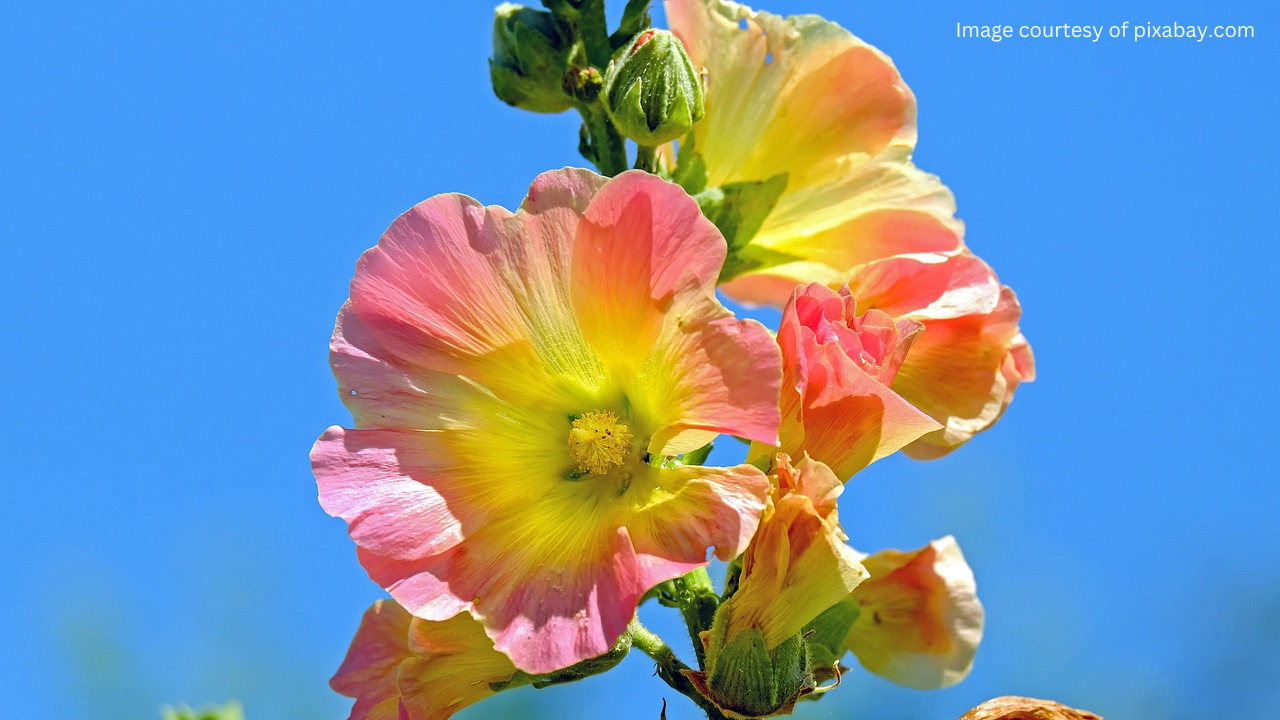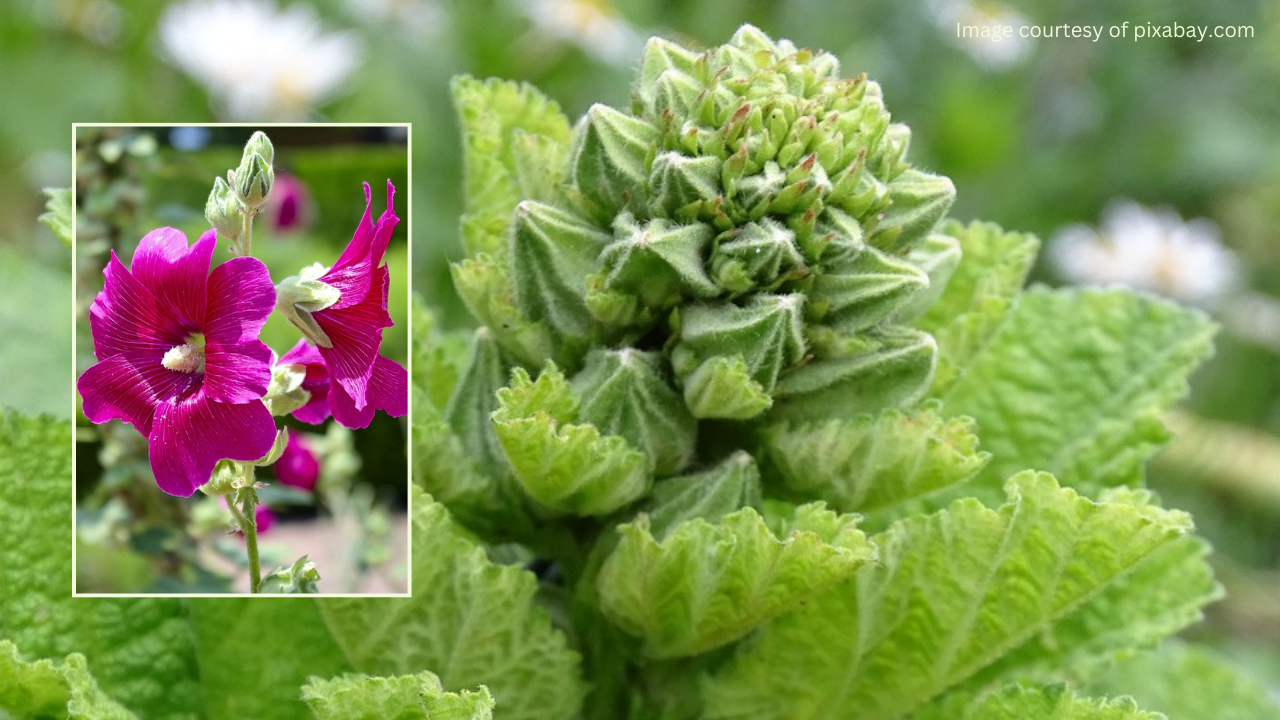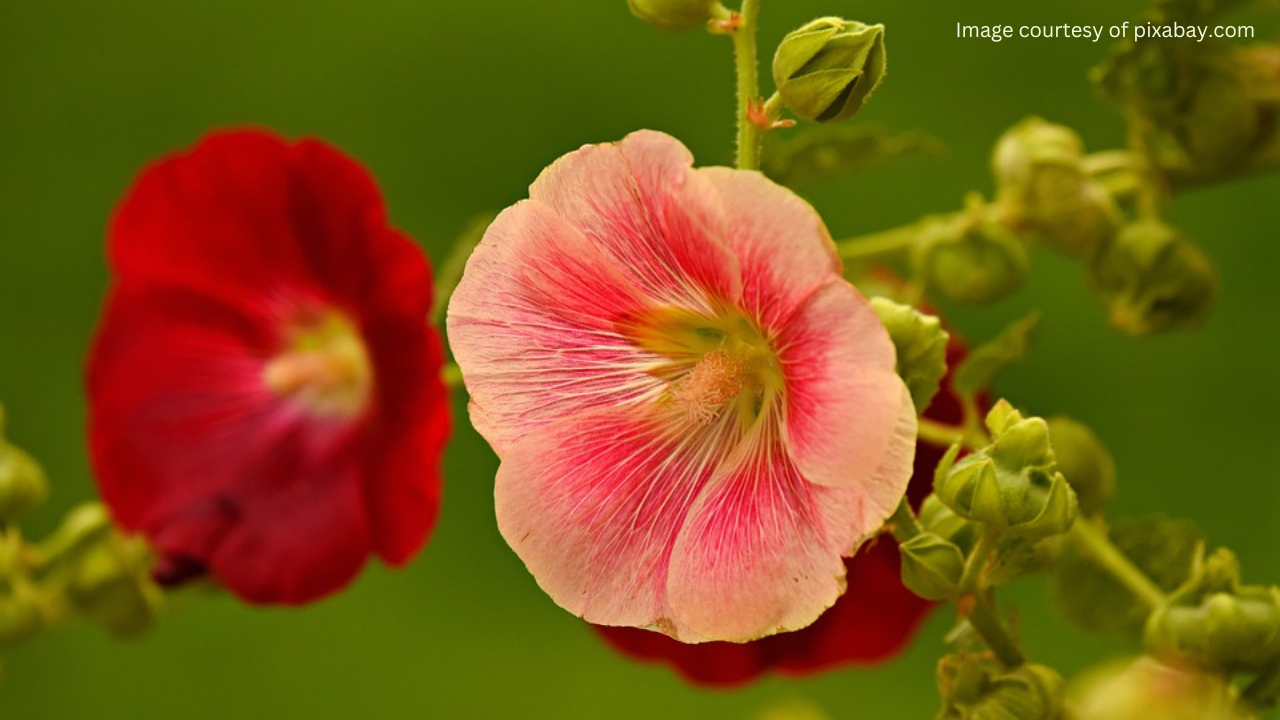Hollyhocks are a popular choice for cottage gardens and other informal plantings. They are also a good choice for back-of-the-border plantings, as their tall height can help to provide a backdrop for other flowers.

Hollyhocks are relatively easy to grow and care for, and they are tolerant of a wide range of soil conditions. They prefer full sun and well-drained soil.
Choosing the Right Seeds

When selecting hollyhock seeds, it's essential to choose high-quality, viable seeds from a reputable supplier. Look for seeds that are fresh, plump, and free from signs of damage or decay. Consider factors such as bloom color, height, and growth habit when choosing the right variety for your garden.
Ideal Growing Conditions

Hollyhocks thrive in full sun and well-drained soil. Choose a location in your garden that receives at least six to eight hours of sunlight per day. The soil should be fertile, loamy, and slightly acidic with good drainage to prevent waterlogging, which can lead to root rot.
Preparing the Soil
Before planting hollyhock seeds, prepare the soil by removing any weeds, rocks, or debris. Loosen the soil to a depth of 12 to 18 inches using a garden fork or tiller. Incorporate organic matter such as compost or aged manure to improve soil fertility and structure.
Planting Hollyhock Seeds
Sow hollyhock seeds directly into the garden bed in early spring or late summer. Scatter the seeds evenly over the prepared soil surface and lightly press them into the soil to ensure good seed-to-soil contact. Water gently to settle the seeds in place, taking care not to wash them away.
Watering and Maintenance

Keep the soil consistently moist but not waterlogged while hollyhock seeds are germinating and establishing. Once seedlings emerge, water deeply and infrequently, allowing the soil to dry out slightly between waterings. Mulch around the base of the plants to conserve moisture and suppress weed growth.
Managing Pests and Diseases
Hollyhocks are susceptible to pests such as aphids, caterpillars, and spider mites, as well as diseases like rust and powdery mildew. Monitor plants regularly for signs of infestation or disease, and take appropriate measures to control them. This may include handpicking pests, using insecticidal soap, or applying fungicides as needed.
Supporting Growing Plants
As hollyhocks grow, they may require support to prevent them from toppling over in strong winds or heavy rain. Install stakes or trellises around the plants and tie them loosely with garden twine to provide support without causing damage to the stems.
Pruning and Deadheading

Regular pruning and deadheading are essential for maintaining healthy, vigorous hollyhock plants and encouraging continuous blooming. Remove spent flowers and yellowing leaves promptly to prevent disease spread and promote new growth.
Harvesting Seeds
To harvest hollyhock seeds, allow the seed pods to mature and dry on the plant. Once the pods turn brown and begin to crack open, carefully remove them and extract the seeds. Store the seeds in a cool, dry place in a labeled envelope or container until ready for planting.
Propagation Methods
In addition to growing from seeds, hollyhocks can be propagated through division or root cuttings. Divide established plants every few years to maintain vigor and prevent overcrowding. Root cuttings can be taken in early spring and planted in pots or directly in the garden soil.
Related Articles:

